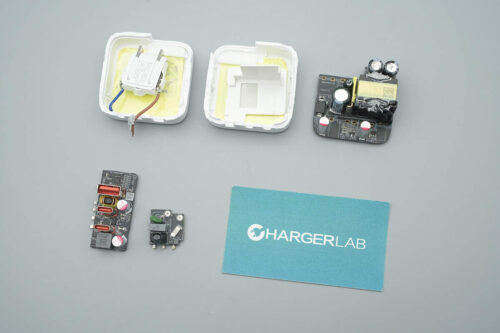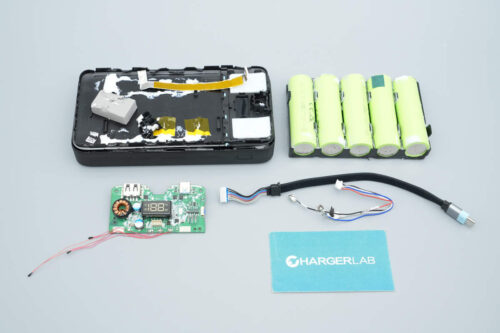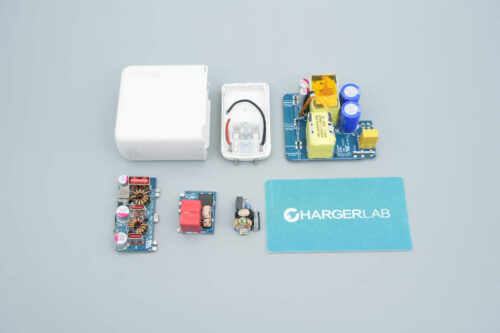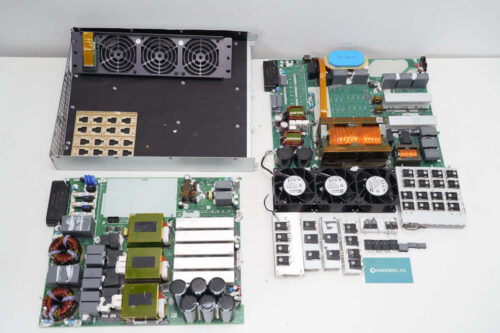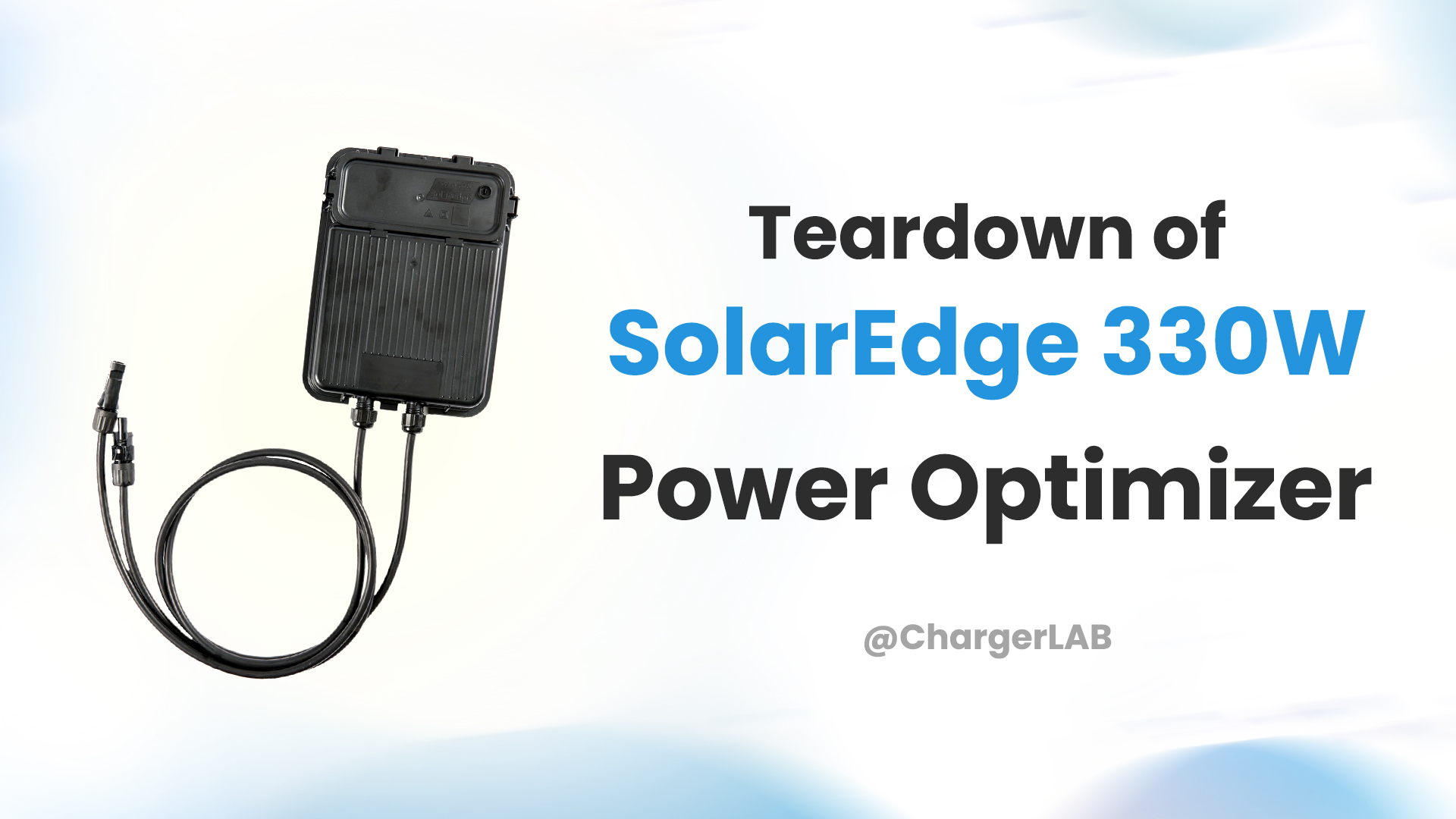Introduction
We recently acquired the GreatWall GW-CRPS550 Platinum server power supply. This unit supports a wide input voltage range of 100-240V and provides a 12V output voltage with a current rating of 45A. The standby power output is also 12V at 3A, delivering a total rated output power of 550W.
The power supply module features a cooling fan, power socket, and indicator light on the input side, while the output side is equipped with a gold finger connector. Internally, it utilizes a PFC+LLC architecture and supports PMBus communication. Next, we will perform a teardown of this power supply module to take a closer look at its internal design and component quality.
Product Appearance

The power supply’s metal casing is secured with screws.

The other side is secured by clips.

Model: GW-CRPS550
AC Input: 100-240V\~ 7-3.5A 60/50Hz
DC Output: +12V 45A, +12VSB 3A
Rated Output Power: 550W

The input side is equipped with a handle, cooling fan, cable tie, release latch, C14 power inlet, and indicator light.

The indicator light is used to show the power supply’s operating status.
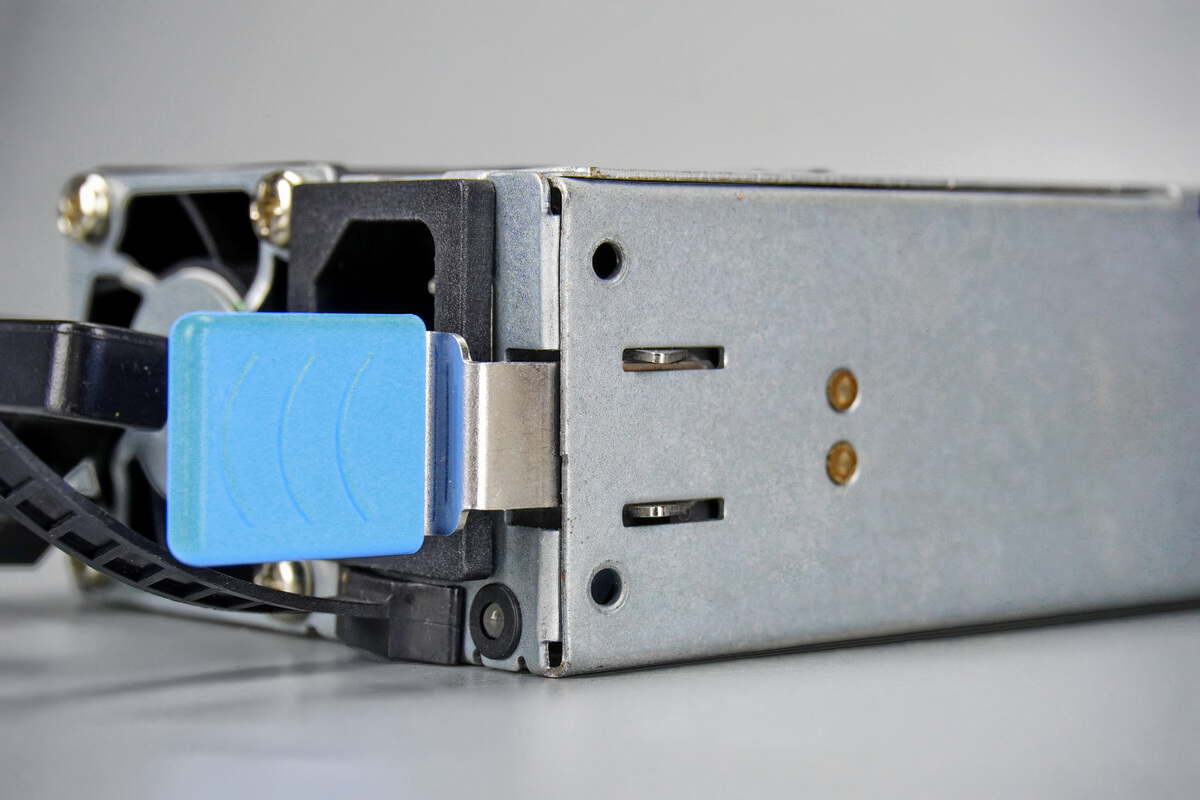
The release latch is used to secure the power supply module.
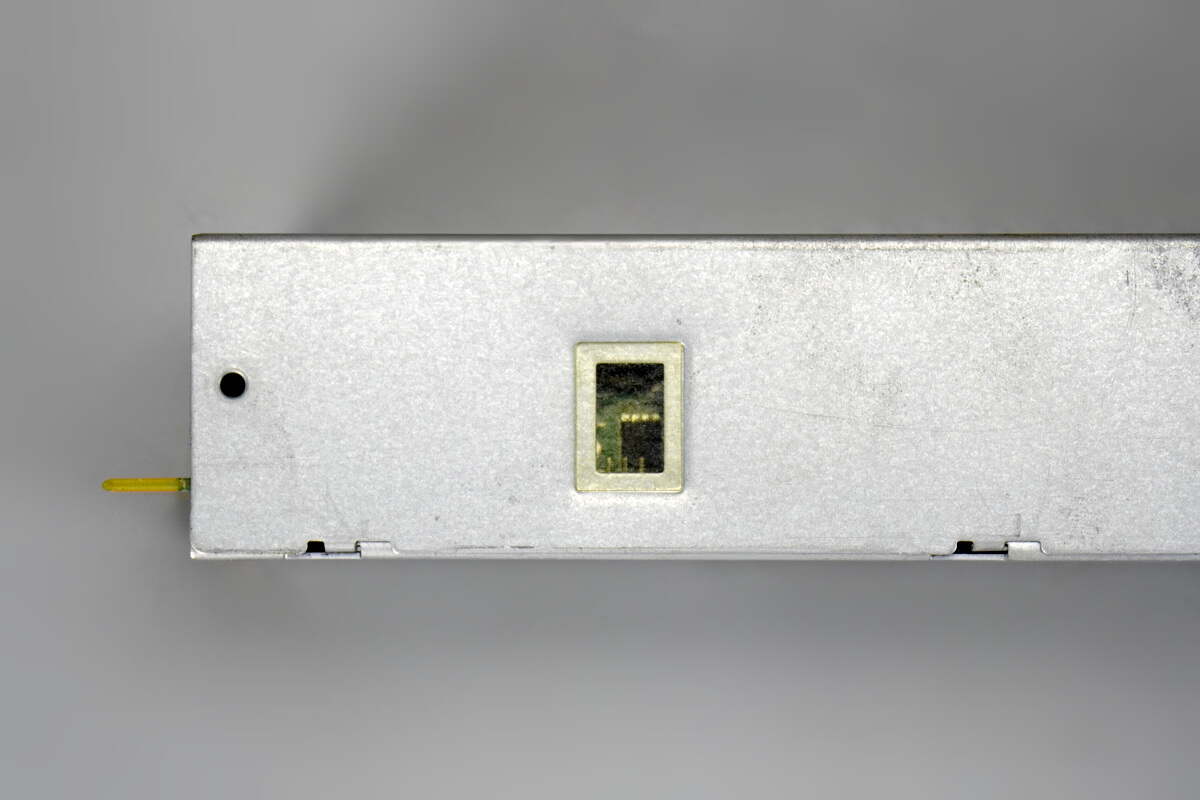
A plastic insulating sheet is attached to the opening of the casing.

The output side features a ventilation grille, and the gold finger connector is secured by soldering.
Teardown
Next, let's take it apart to see its internal components and structure.

First, unscrew the screws and open the casing. The PCBA module is insulated with a Mylar sheet.

The PCBA module is secured with screws.

Unscrew the mounting screws and remove the PCBA module from the casing.

Front view of the PCBA module. On the left side is the AC input section, which includes components such as a fuse, common mode choke, NTC thermistor, rectifiers, PFC MOSFETs, PFC rectifier, and LLC MOSFETs. On the right side are the main transformer, filter capacitors, standby power circuit, and standby transformer.

On the back side are the PFC controller, operational amplifiers, LLC controller, isolation driver, MCU, and optocouplers.
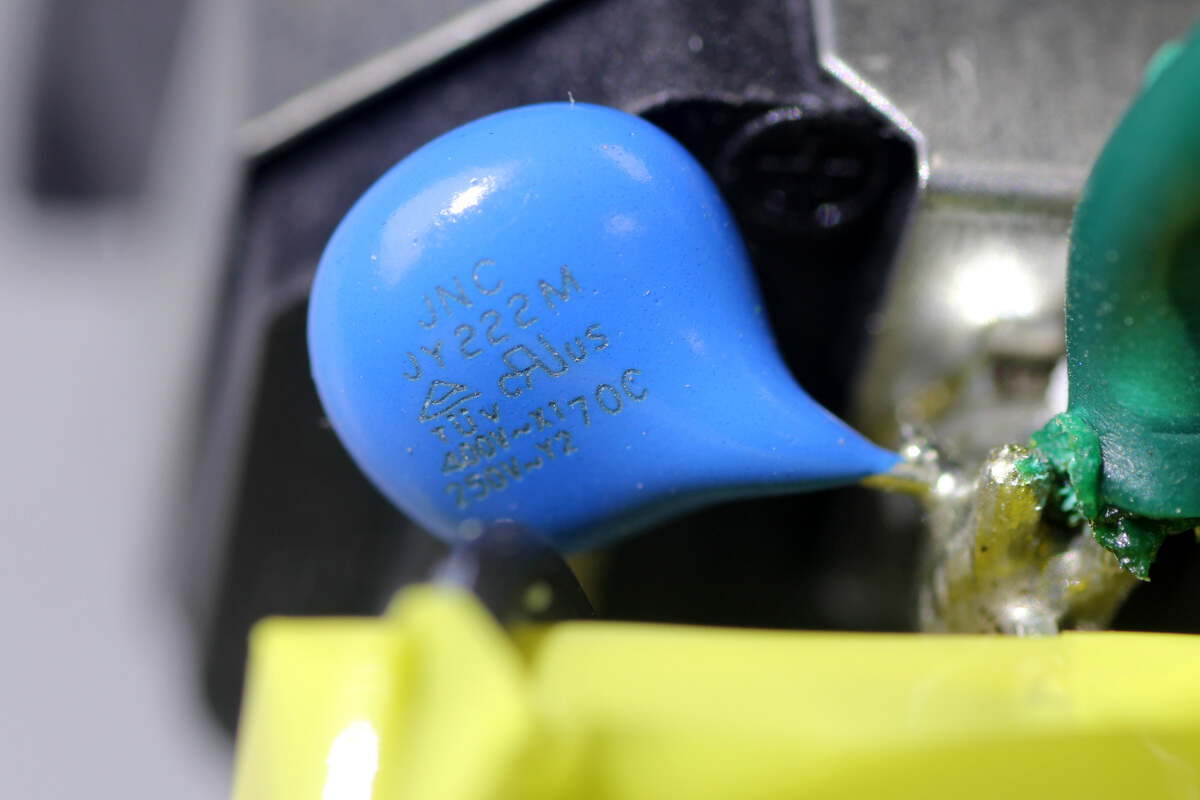
The blue Y capacitor is manufactured by JYA-NAY.
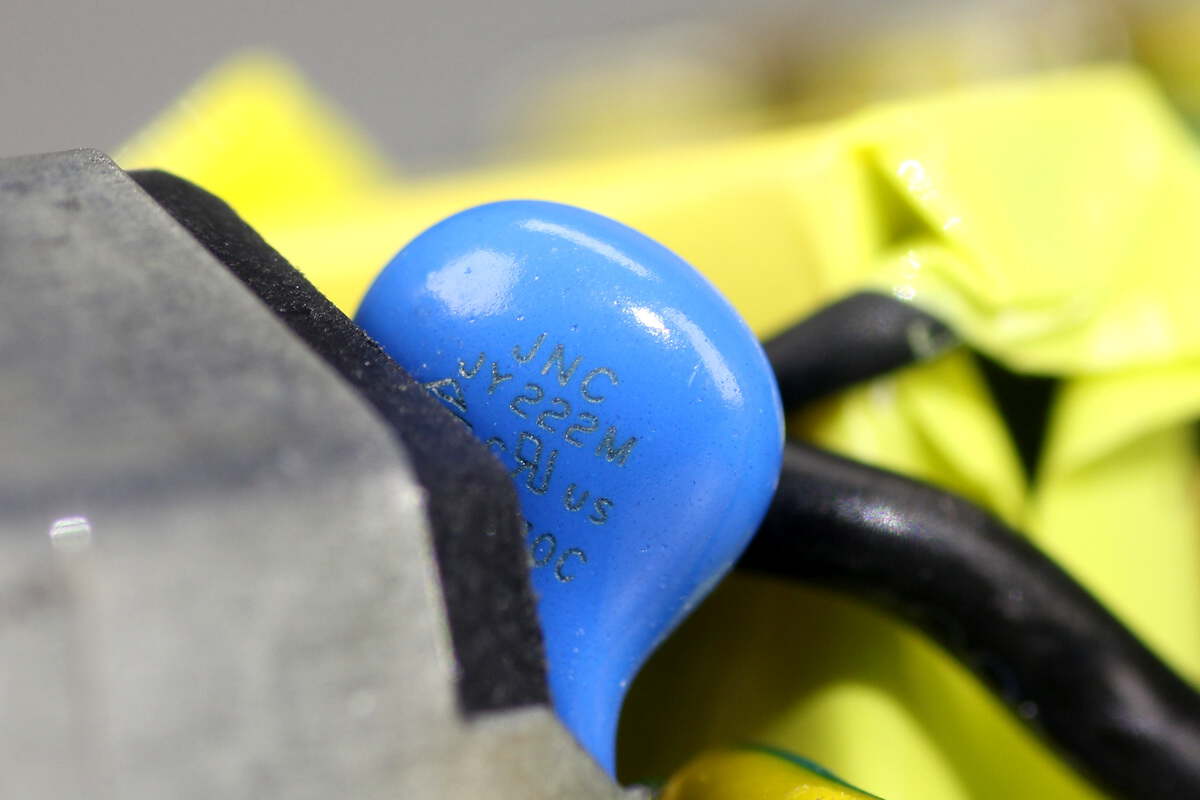
The other Y capacitor has the same specifications.

The safety X2 capacitor has a specification of 1 μF.

The input fuse is insulated with heat-shrink tubing.
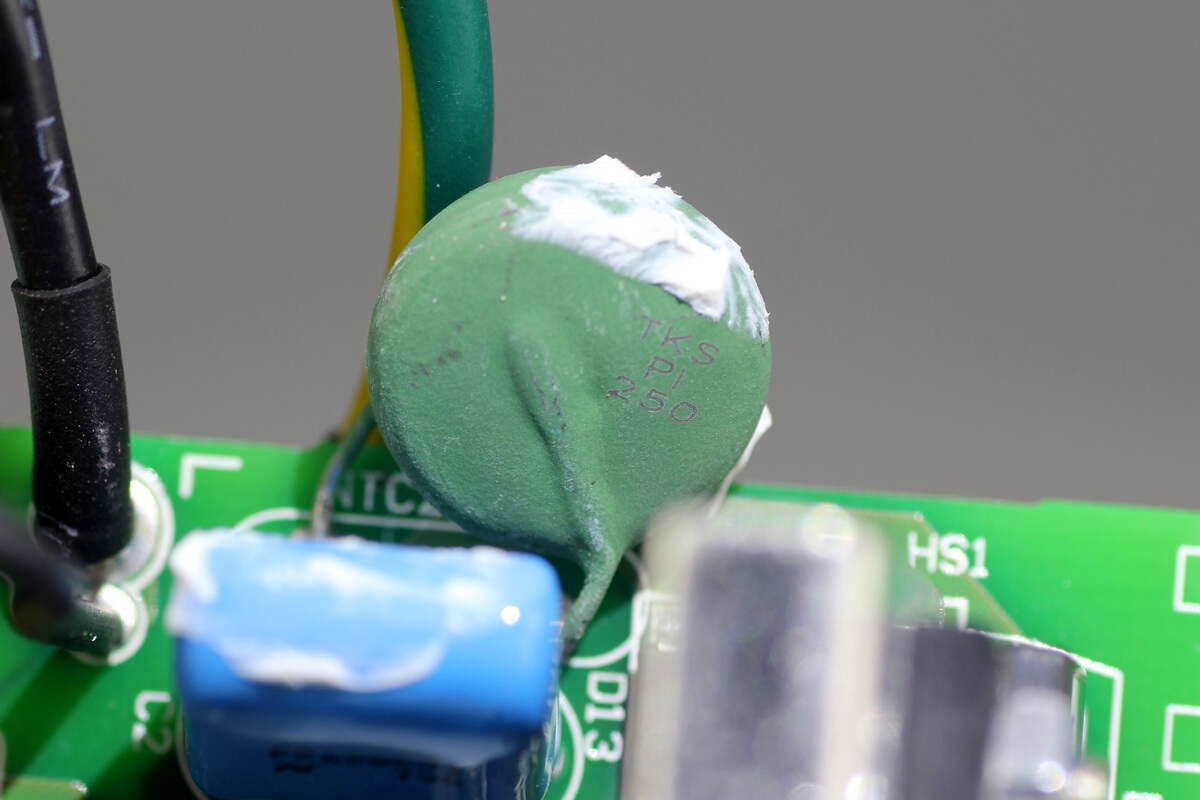
The NTC thermistor is manufactured by Thinking and is marked with "PI 250".
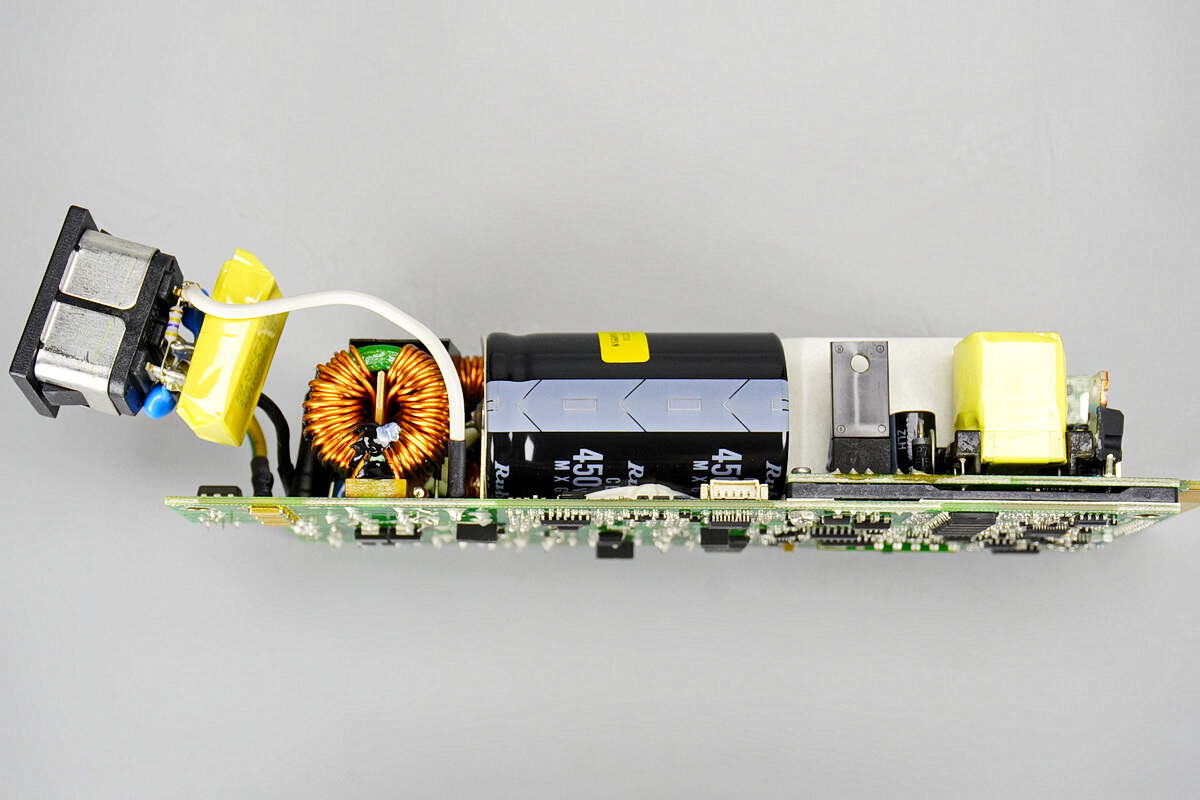
On the side of the PCBA module are the common mode choke, high-voltage filter capacitor, standby power controller IC, and standby power transformer.

The common mode choke is wound with enameled wire and has a bakelite insulation plate at the bottom.

The safety X2 capacitor has a specification of 0.47 μF.
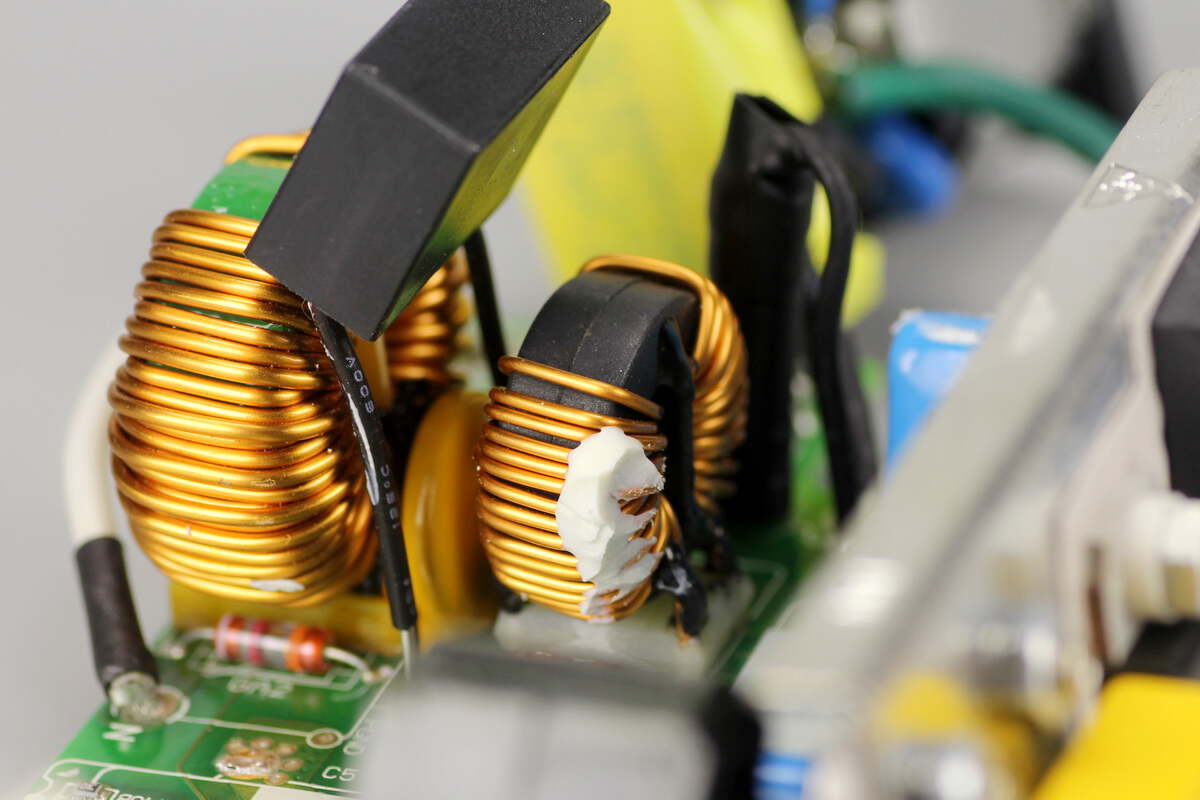
Below the capacitor are a varistor and the common mode choke.

Three SMD Y capacitors from MURATA are coated with conformal coating.

On the other side are rectifiers, PFC rectifier, resonant capacitor, current transformer, and synchronous rectification PCB.

The heatsink houses the rectifiers, thyristors, PFC MOSFETs, PFC rectifier, and LLC MOSFETs.
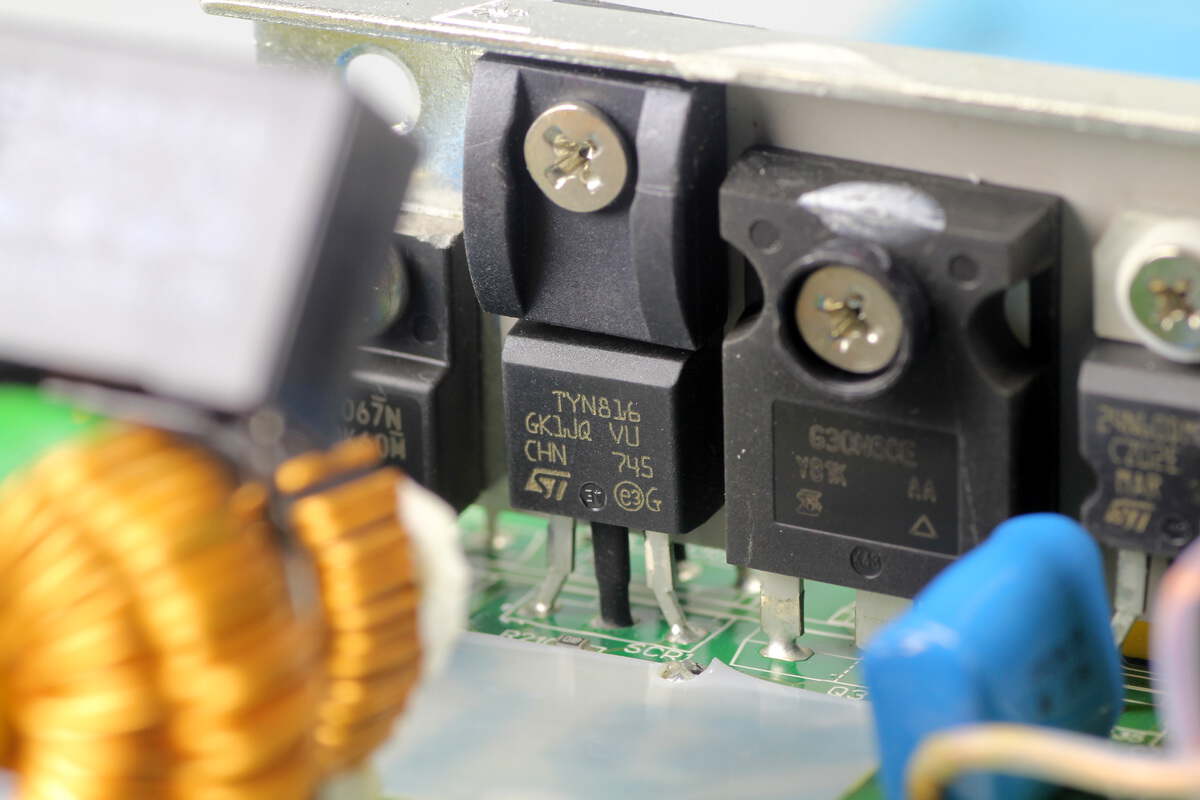
The thyristor is from STMicroelectronics, model TYN816, rated 16A 800V, and comes in a TO-220AB package.

The other thyristor has the same model.
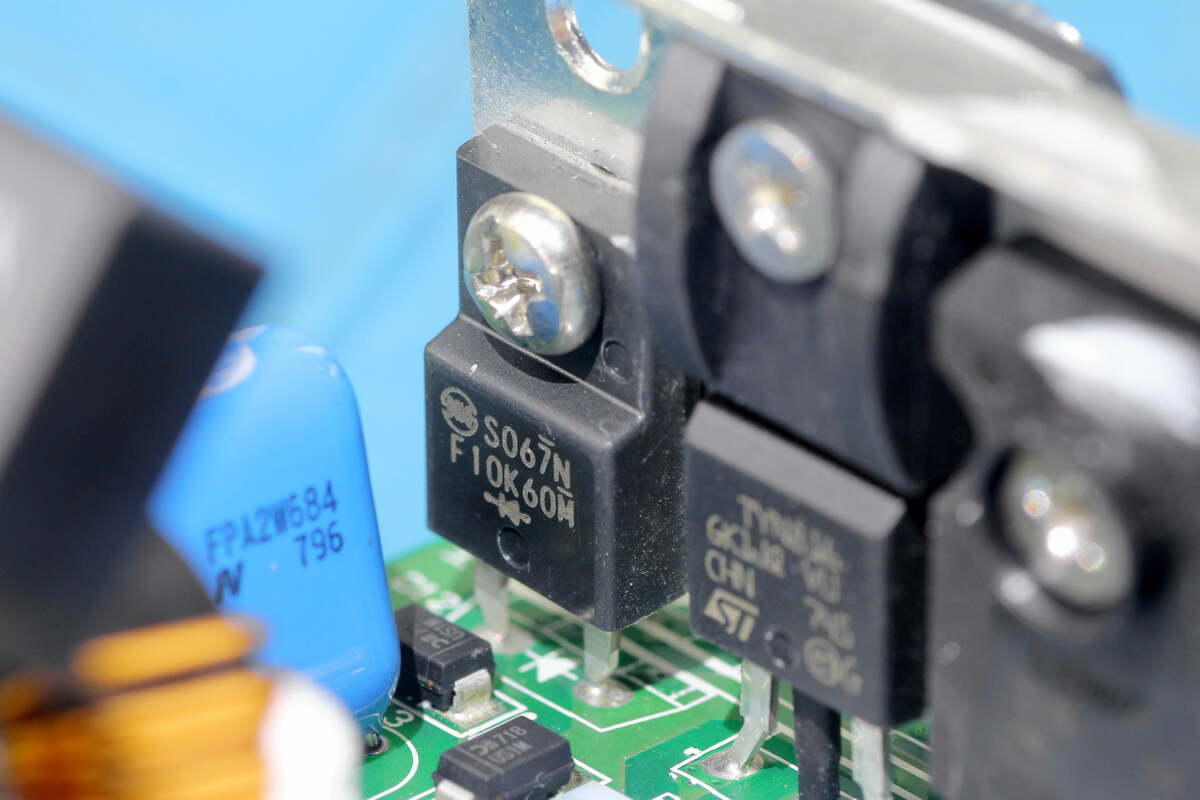
The fast recovery diode is from Shindengen, model SF10K60M, rated 600V 10A, and uses an FTO-220AG package.

The other fast recovery diode has the same model.

The LITEON MOC3063 optocoupler is used to control the conduction of the thyristors for rectification.

The film capacitor is rated at 450V and 0.68μF.

The PFC controller is from CHAMPION, model CM6500. It is an EPA/90+ ZVS-like PFC controller designed for high efficiency under both full and light load conditions, and comes in an SOP-14 package.

The operational amplifier is from TI, model LM258A. It is an industry-standard dual op-amp, rated for operation between -20°C and 85°C, and comes in an SOIC-8 package.

The MCU is from Microchip, model PIC16F1829. It features a high-performance RISC CPU, with 14KB of internal Flash memory and 1KB of RAM, supports an operating voltage range of 1.8 to 5.5V, and comes in an SSOP-20 package.
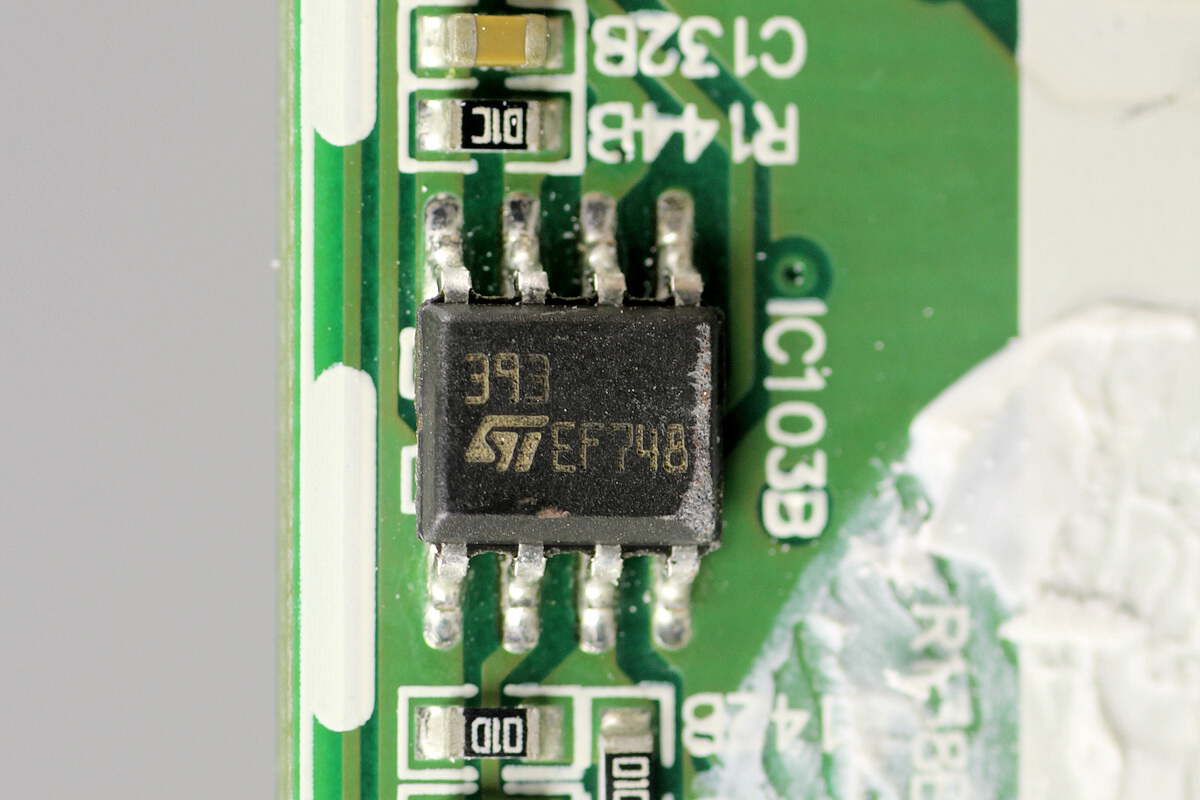
The voltage comparator is from STMicroelectronics, model LM393. It is a dual low-power voltage comparator and comes in an SO-8 package.

Close-up of the transistor marked with "MY".

The voltage regulator is from STMicroelectronics, model LD1117S50TR. It supports an input voltage of up to 15V, provides a 5V output voltage, delivers an output current of 800mA, and comes in a SOT-223 package.
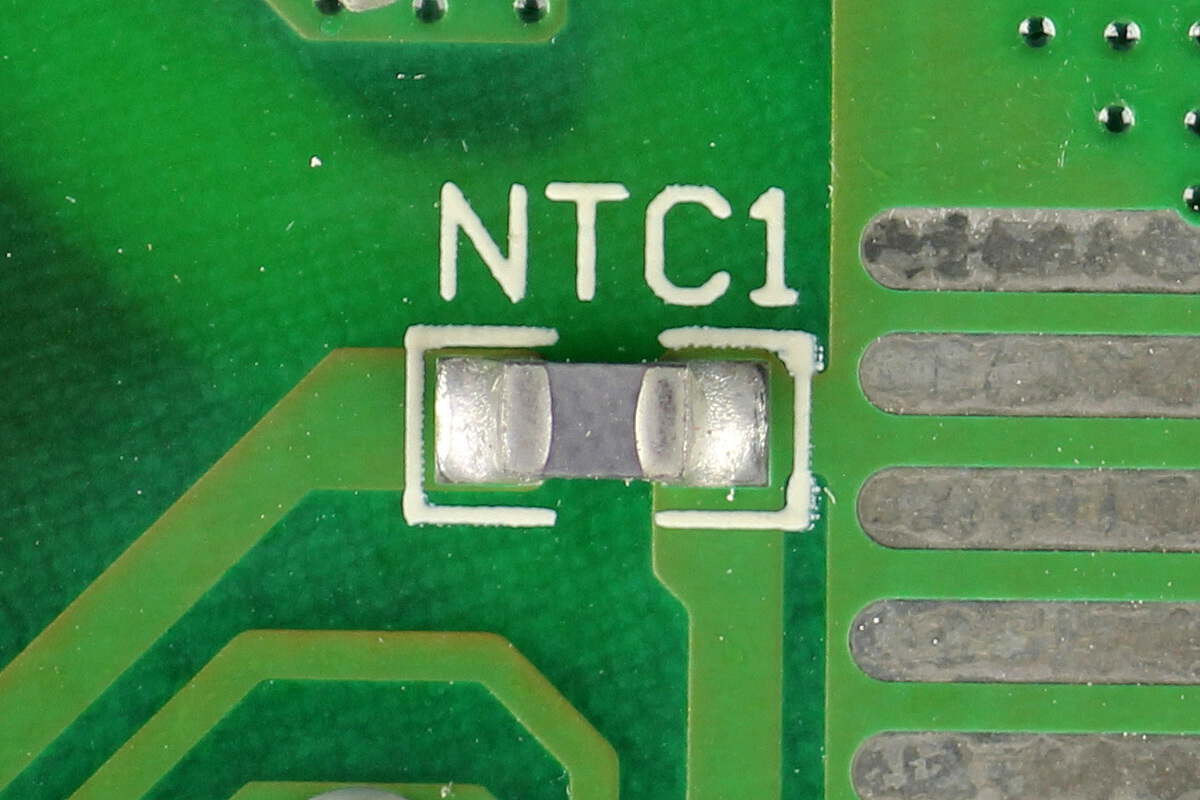
The SMD NTC thermistor is used to monitor the internal temperature of the power supply.

The PFC MOSFET is from VISHAY, model SiHG30N60E. It is an N-channel MOSFET with a voltage rating of 650V, an on-resistance of 125mΩ, and comes in a TO-247AC package.

The 25mΩ shunt resistor is used to sense the current of the PFC MOSFET.
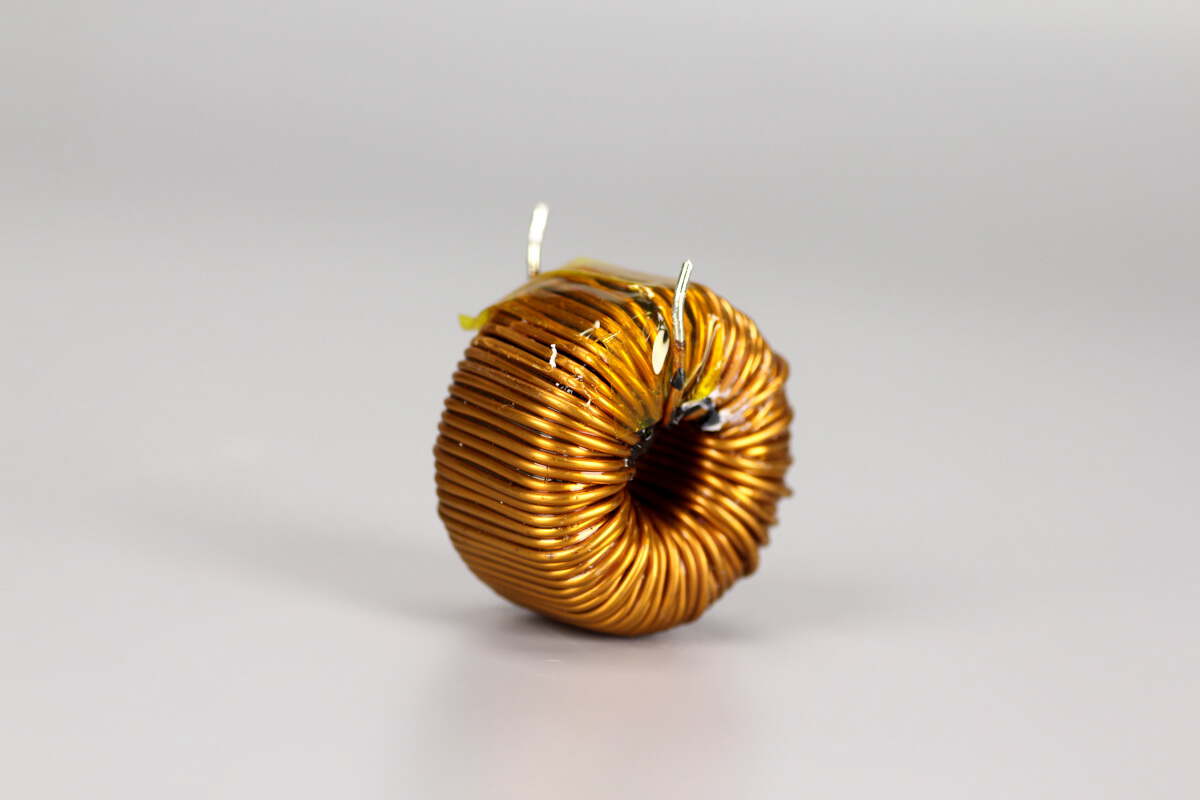
The PFC boost inductor is wound on a ferrite core.

The silicon carbide diode is from STMicroelectronics, model STPSC4H065. It is a high surge-rated SiC Schottky diode, rated 650V 4A, and comes in a TO-220AC package.

The high-voltage filter capacitor is from Rubycon, part of the MXG series electrolytic capacitors, rated at 450V 470μF.
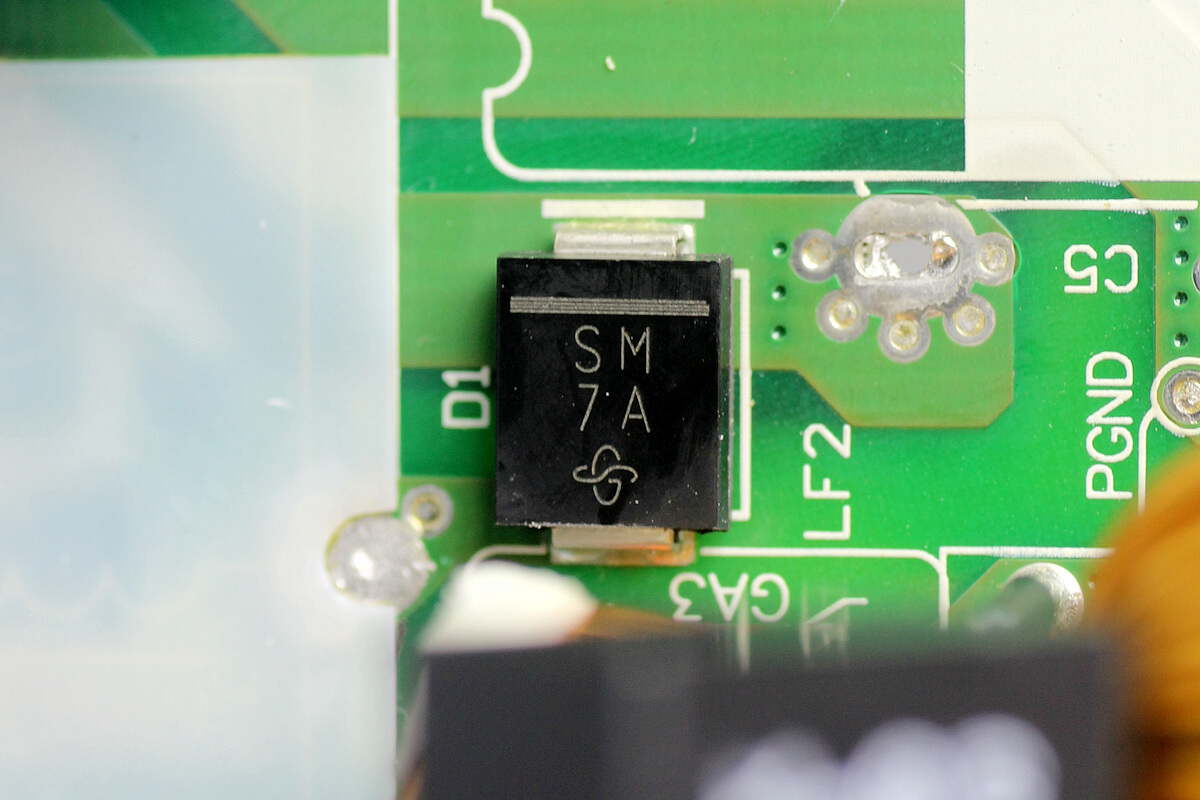
The PFC bypass diode is from VISHAY, marked with "SM", model S3M, rated 1000V 3A, and comes in an SMC package.
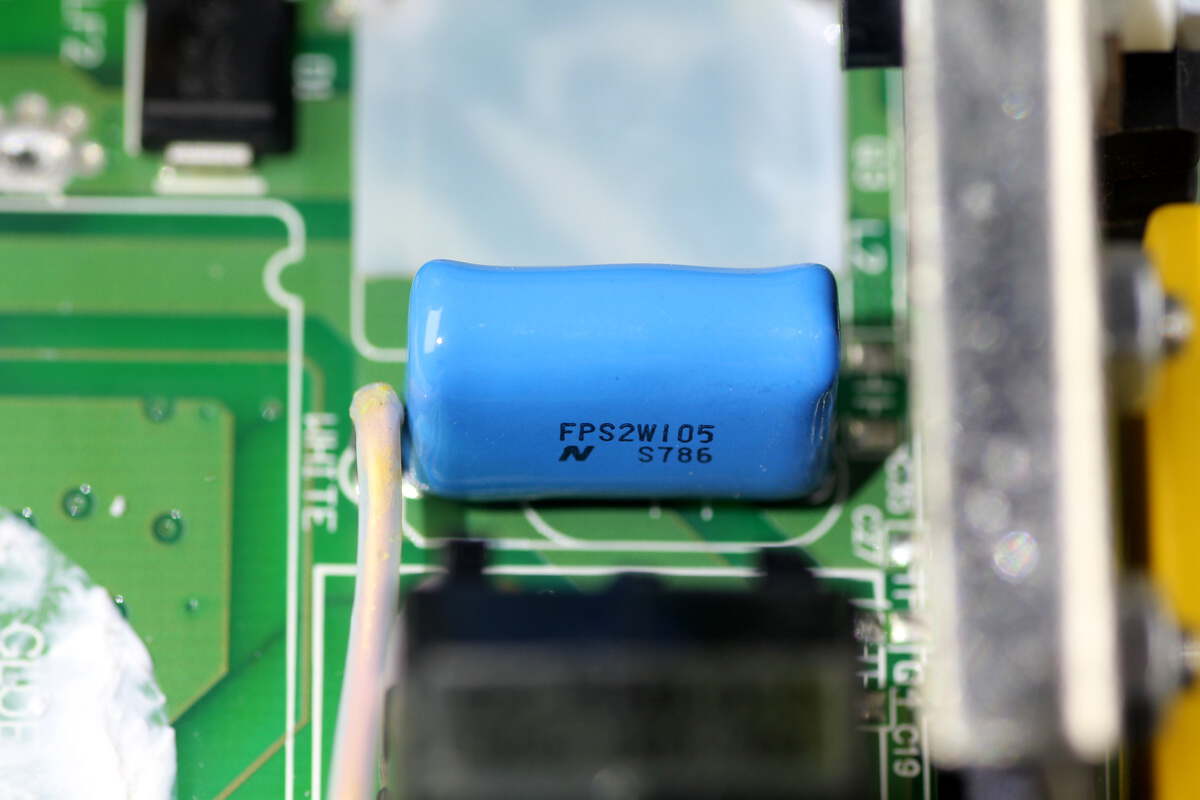
The film capacitor is from Nitsuko, rated at 450V 1μF.

Close-up of the two VISHAY S3M diodes.

The LLC controller is from CHAMPION, model CM6901. It is a secondary-side LLC + synchronous rectification controller, designed for LLC power conversion and secondary synchronous rectifier driving. It drives the LLC MOSFETs via an isolation driver and comes in an SOP-16 package.

The isolation driver is from Skyworks, model Si8230BD. It integrates two fully isolated drivers with 5kVrms isolation capability and a 0.5A driving capability, and comes in an SOIC-16WB package.

The LLC MOSFET is from STMicroelectronics, model STP24N60DM2. It is an N-channel MOSFET with a voltage rating of 600V, an on-resistance of 175mΩ, and comes in a TO-220 package.

The other LLC MOSFET has the same model.
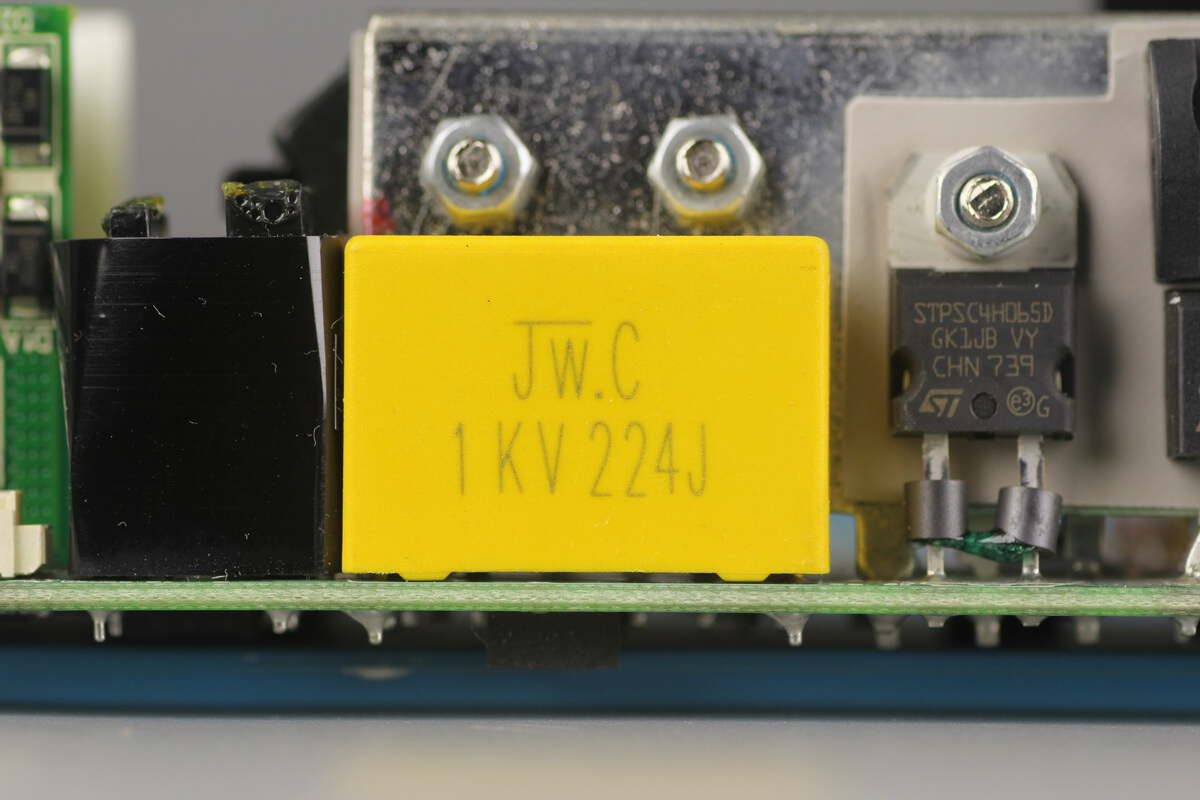
The resonant capacitor is rated at 1kV 0.22μF.

The resonant inductor is wound with Litz wire.

The current transformer is insulated with tape.
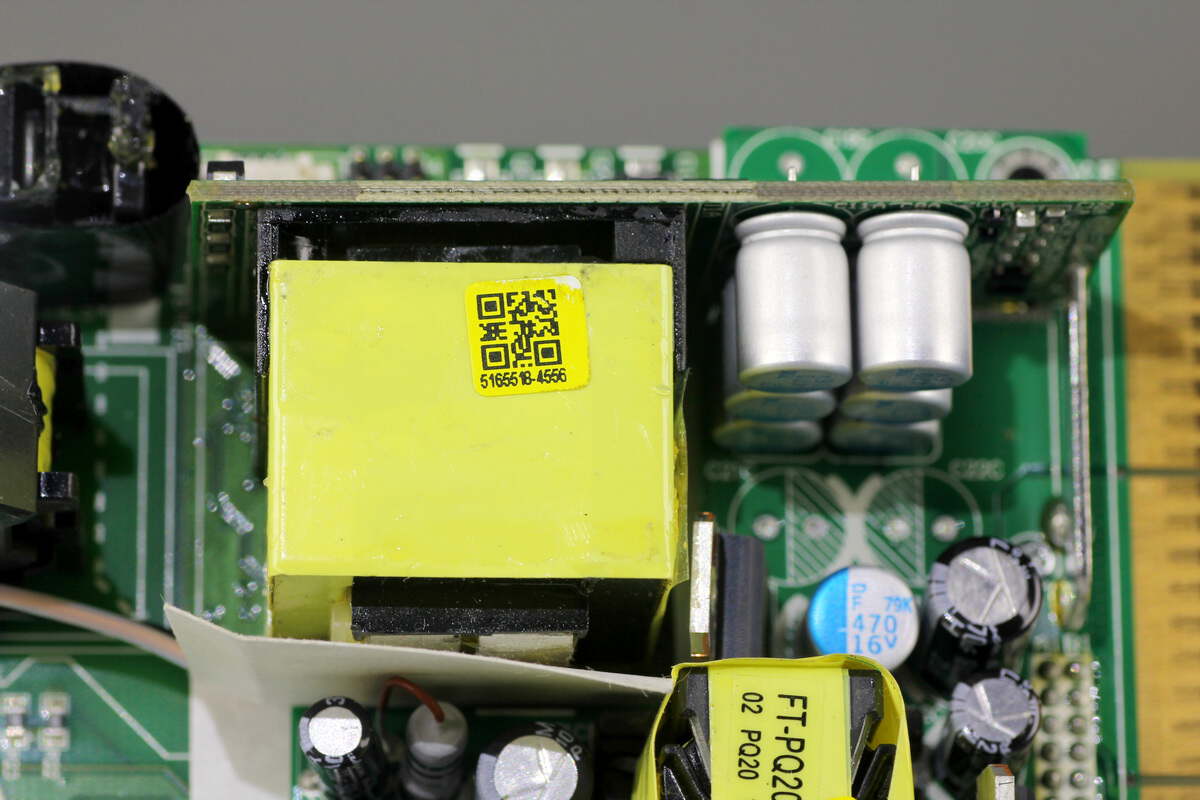
The transformer is soldered onto the vertical PCB.

The Everlight EL1019 optocouplers are used for MCU communication between the primary and secondary sides.
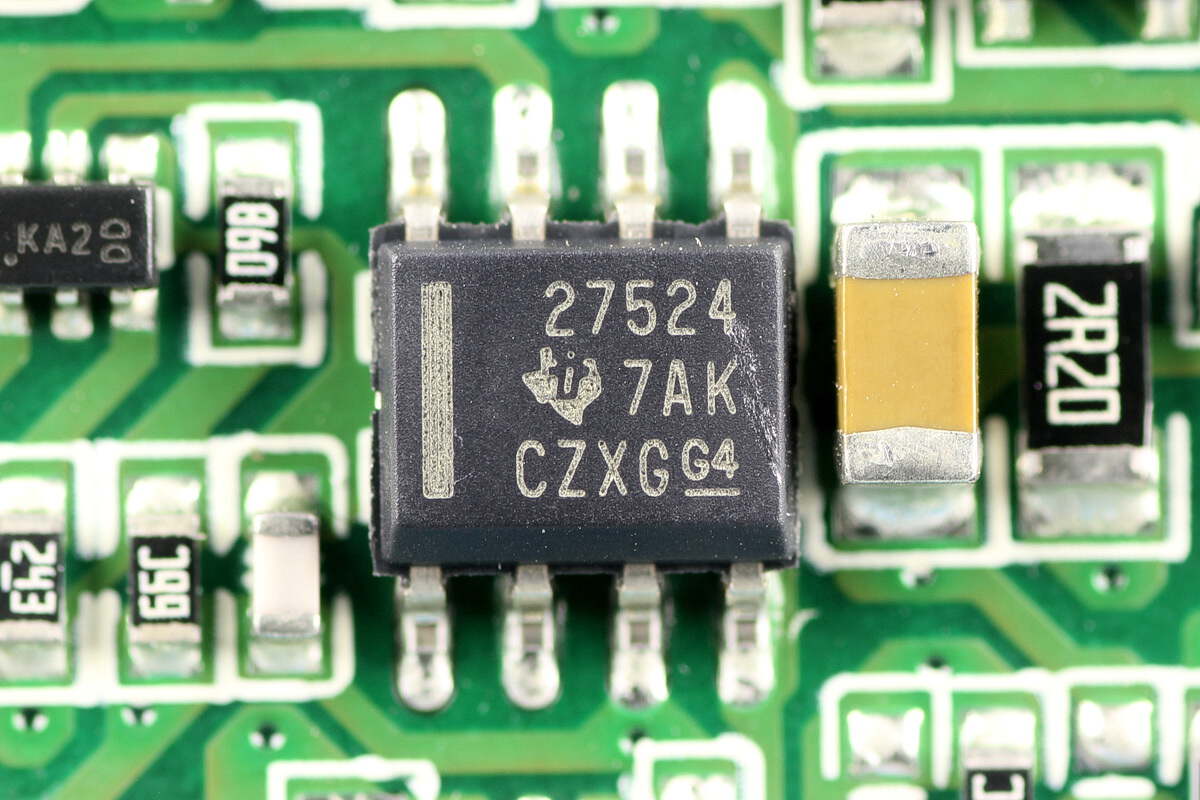
The synchronous rectifier driver is from TI, model UCC27524. It is a dual-channel, 5V high-speed low-side gate driver with negative input voltage capability, and comes in an SOIC-8 package.

The back side of the vertical PCB contains the synchronous rectifiers and VBUS MOSFETs.
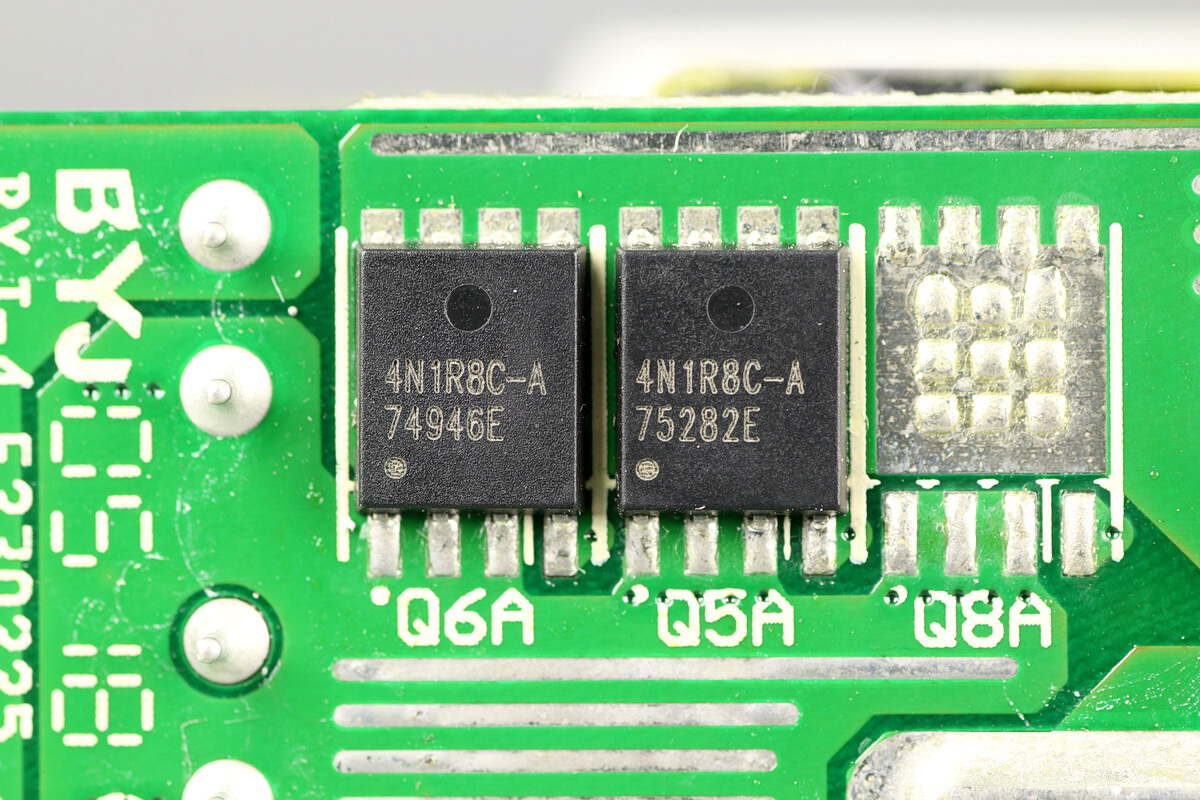
The synchronous rectifiers are from APEC, marked with 4N1R8C-A, model AP4N1R8CMT-A. They are N-channel MOSFETs with a voltage rating of 45V, an on-resistance of 1.8mΩ, and come in a PMPAK 5x6 package.
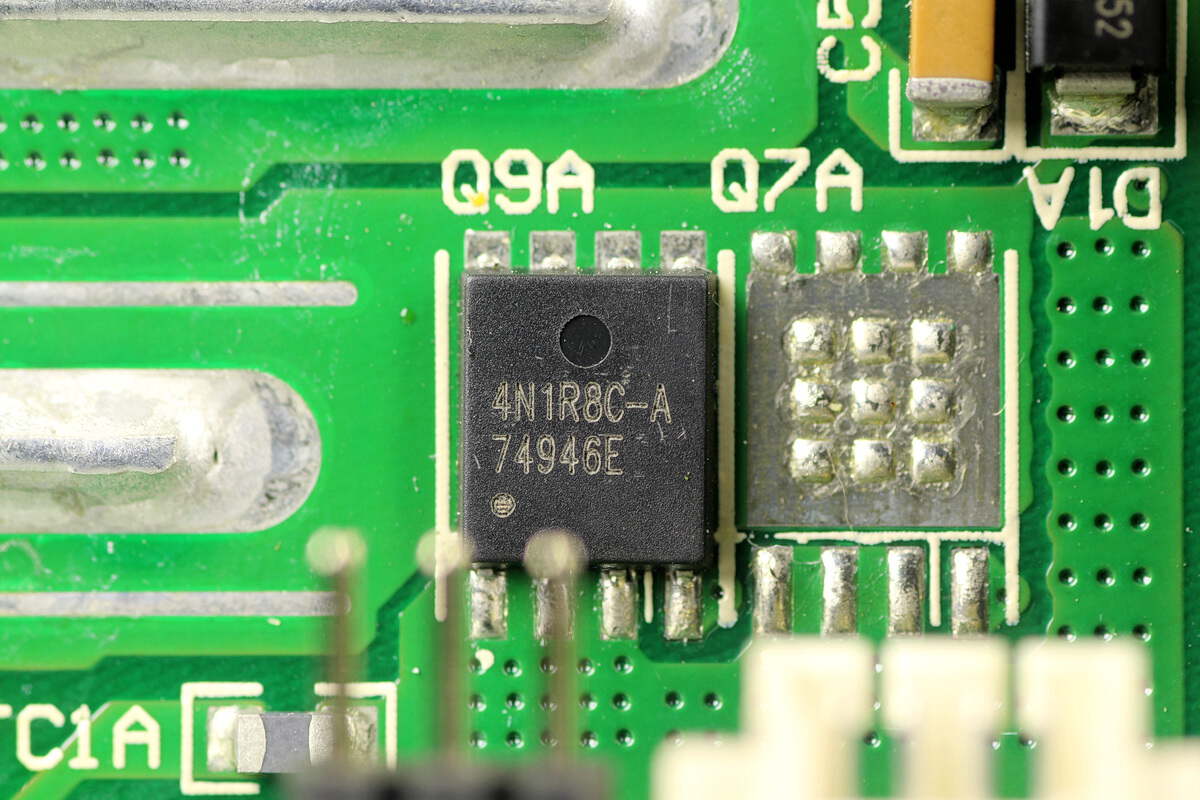
The other set of synchronous rectifiers has the same model.
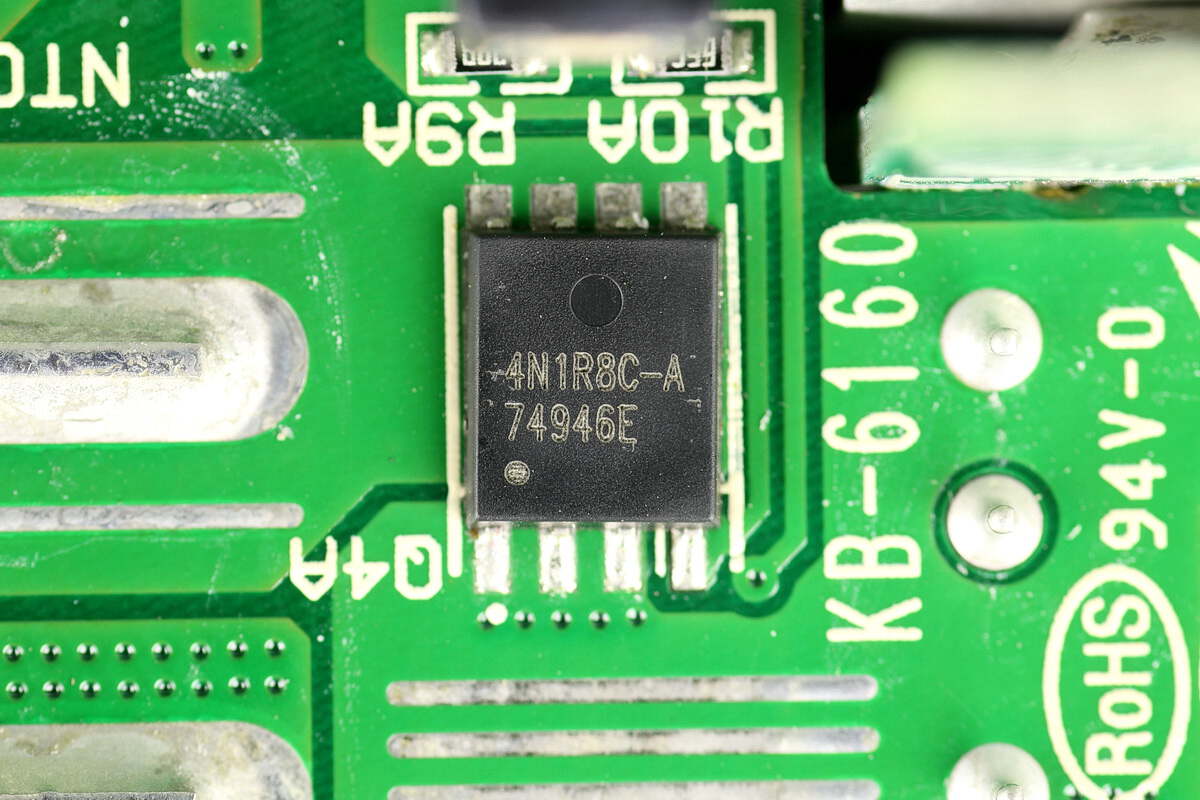
Close-up of the second synchronous rectifier.

The output VBUS MOSFETs are from APEC, model AP1A003GMT. They are N-channel MOSFETs with a voltage rating of 30V, an on-resistance of 0.99mΩ, and come in a PMPAK 5x6 package.

The positive output is connected via a copper plate, and six filtering capacitors are from NCC, belonging to the PSF series of conductive polymer solid aluminum electrolytic capacitors, each rated at 470μF, 16V.

The standby power supply IC is sourced from SanKen, model STR-W6051S. It integrates a 650V MOSFET, an internal startup circuit, and standby functionality. The chip offers comprehensive protection features, supports an output power of up to 30W, and comes in a TO220F-6L package.
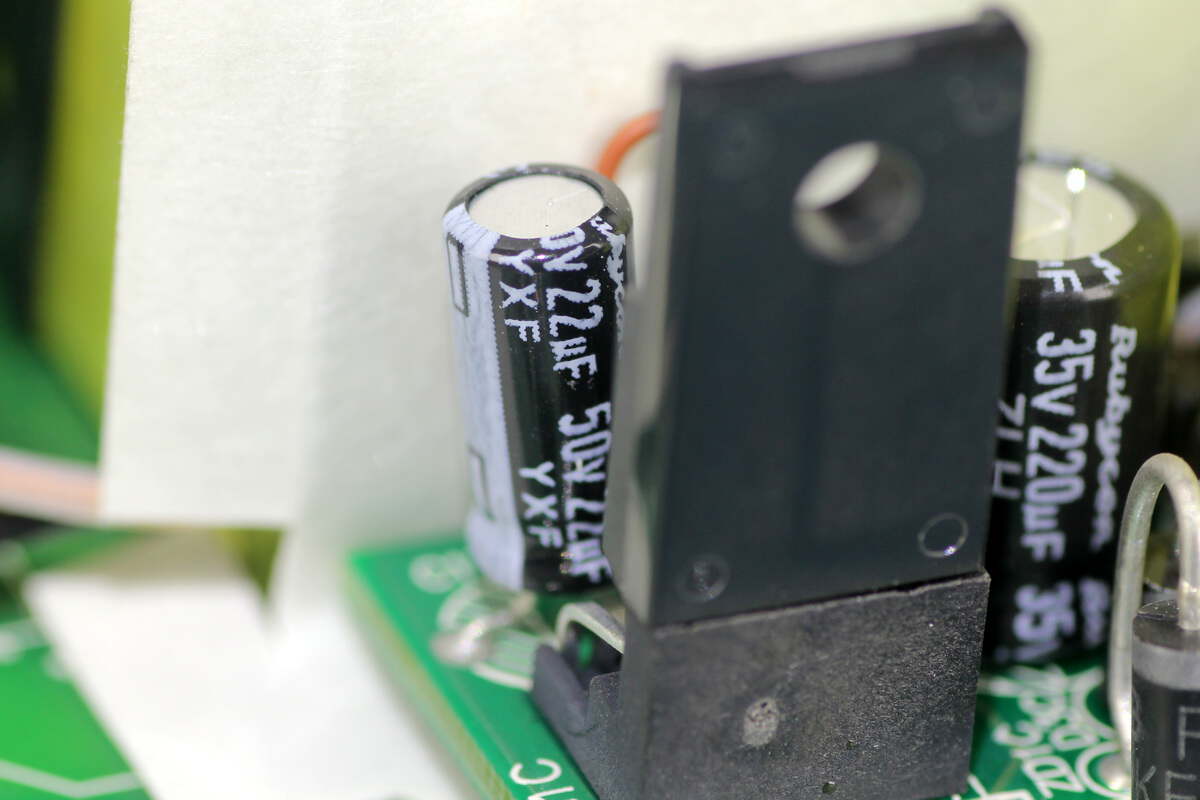
The filter capacitor is manufactured by Rubycon, with a specification of 22μF, 50V.

Another filtering capacitor is specified at 220μF, 35V.

The standby power transformer is insulated with adhesive tape.

The Schottky diode is sourced from STMicroelectronics, model STPS30150CT, rated at 150V and 30A, and packaged in a TO-220AB case.

The solid capacitor is rated at 470μF, 16V.
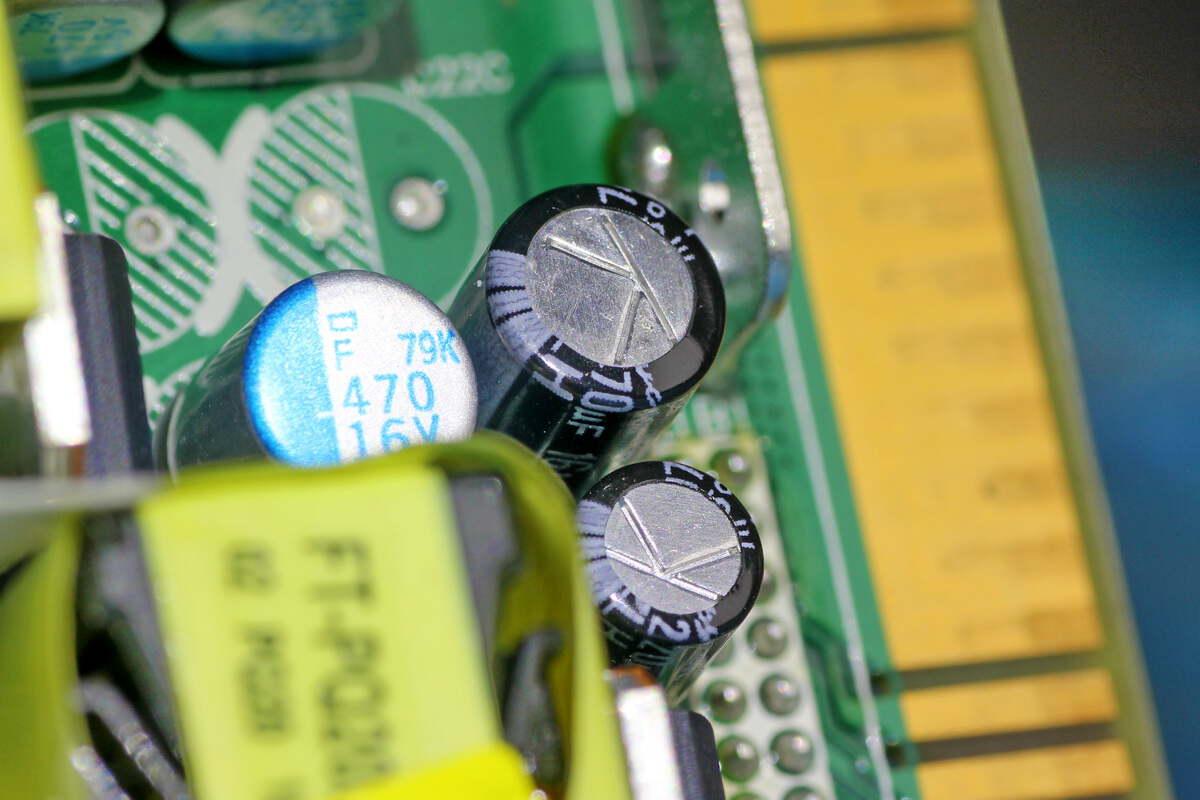
The filter capacitor is from Rubycon, with a specification of 470μF, 16V.

Another filtering capacitor is specified at 220μF, 16V.
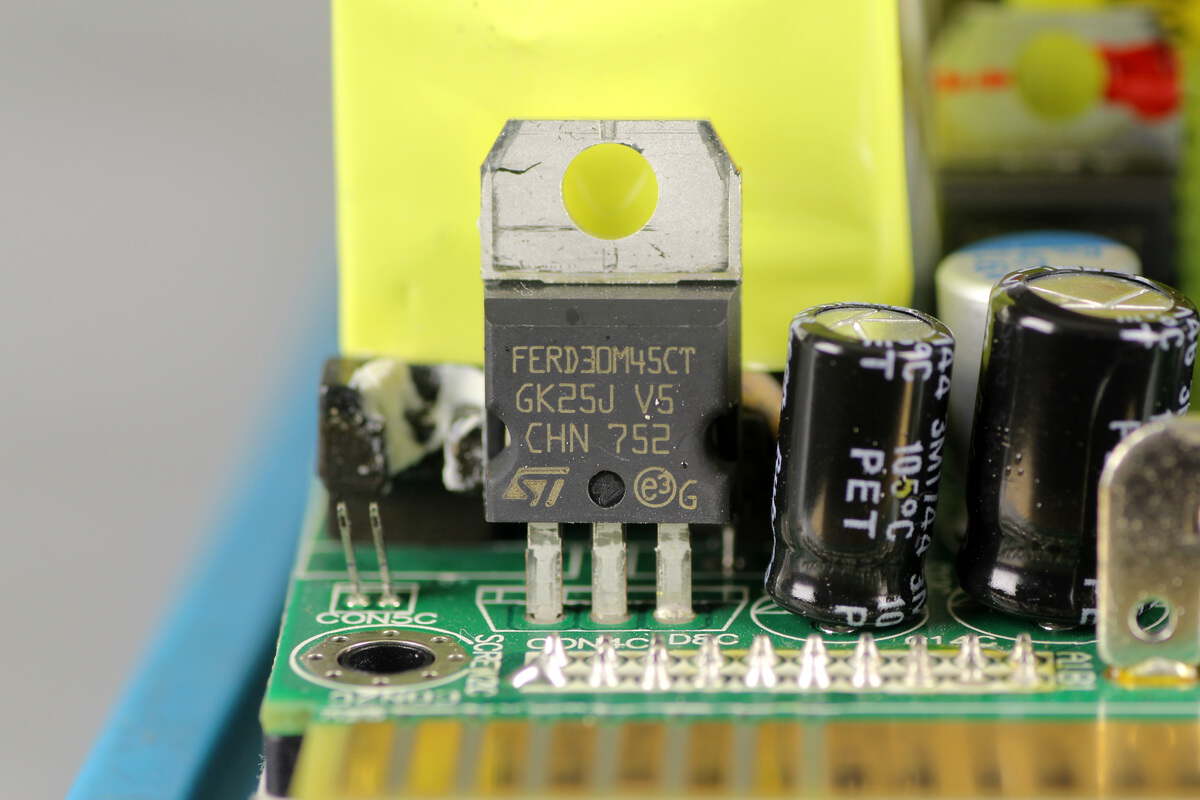
The diode is sourced from STMicroelectronics, model FERD30M45CT. It is a field-effect rectifier diode, rated at 45V, 30A, and packaged in a TO-220AB case.

Close-up of the adjustable resistor.

The MCU is from NXP, model LPC1114FBD48/302. It features an ARM Cortex-M0 core, operates at 50MHz, includes 32KB FLASH and 8KB SRAM, and comes in an LQFP48 package.

Close-up of the 12.000MHz clock crystal oscillator.

The voltage regulator chip is sourced from TI, model L317LCD. It supports an input voltage of up to 40V, an output voltage of 37V, and an output current of 100mA. The package type is SOIC-8.
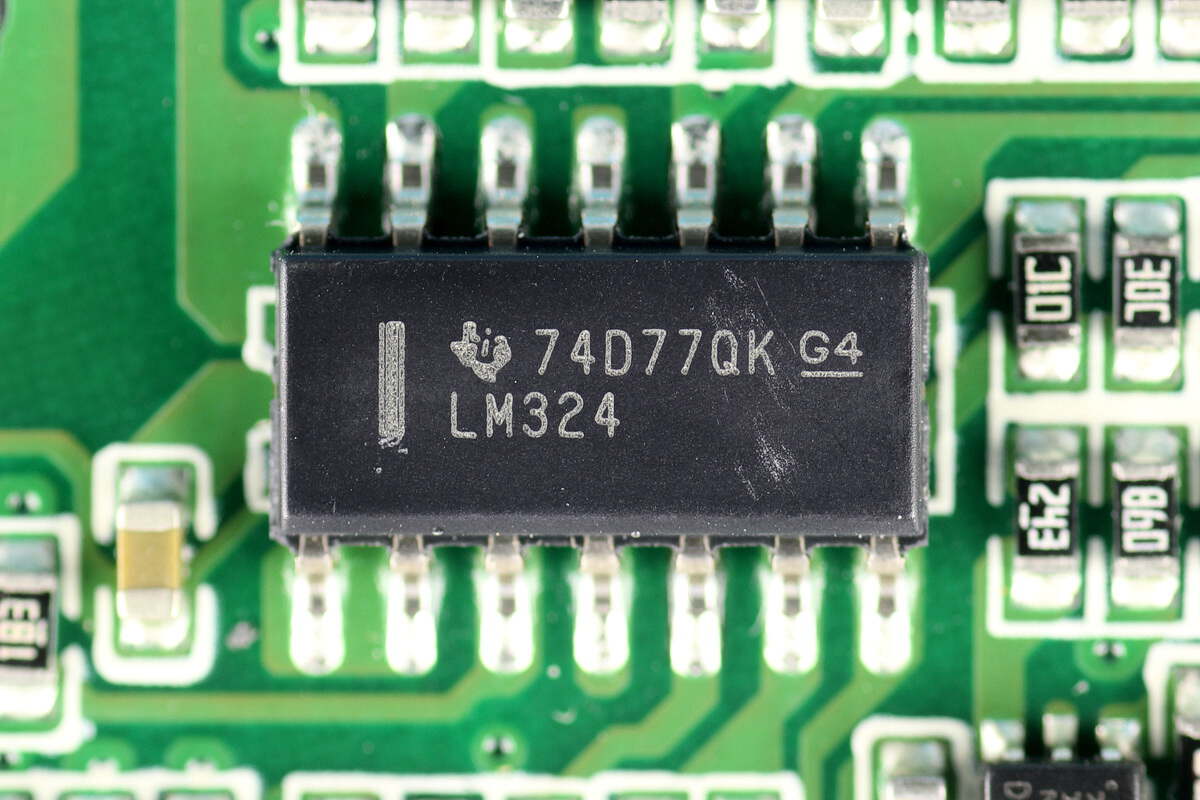
This operational amplifier is from TI, model LM324. It is a quad-channel general-purpose op-amp, packaged in SOIC-14.
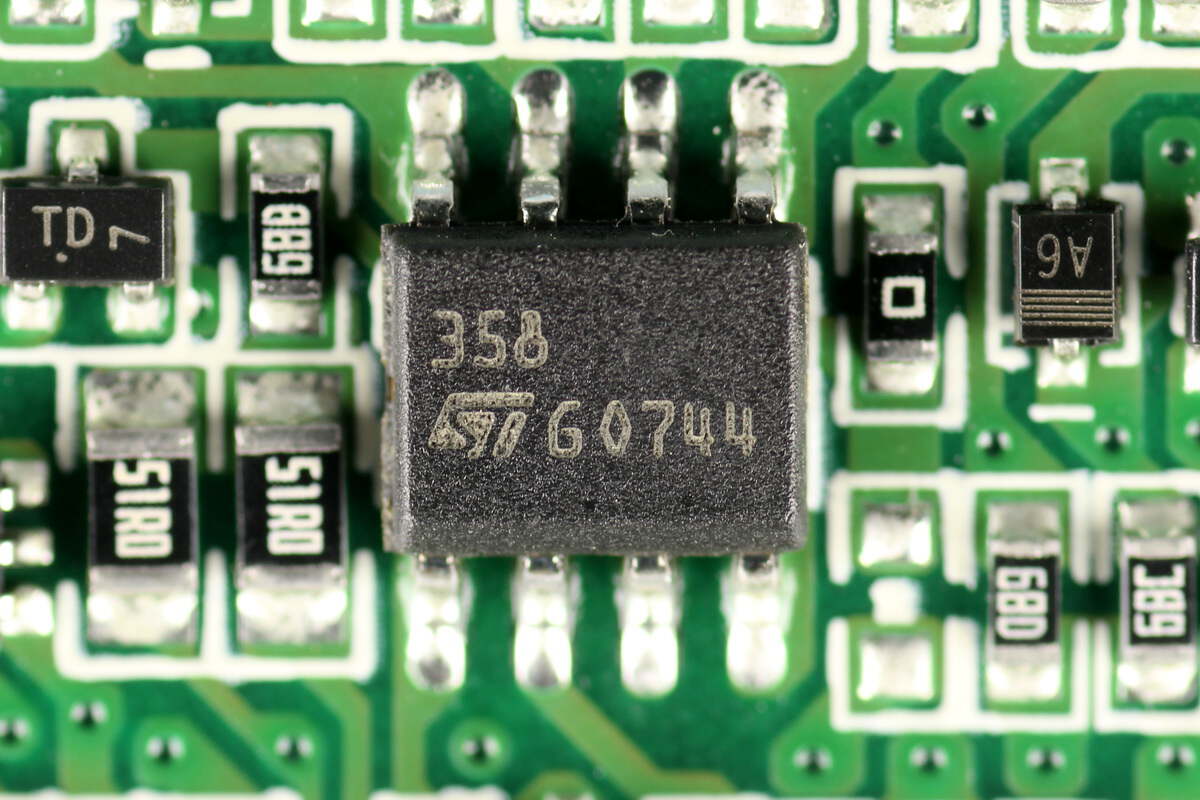
The other operational amplifier is from STMicroelectronics, model LM358. It is a low-power dual op-amp, packaged in SO-8.
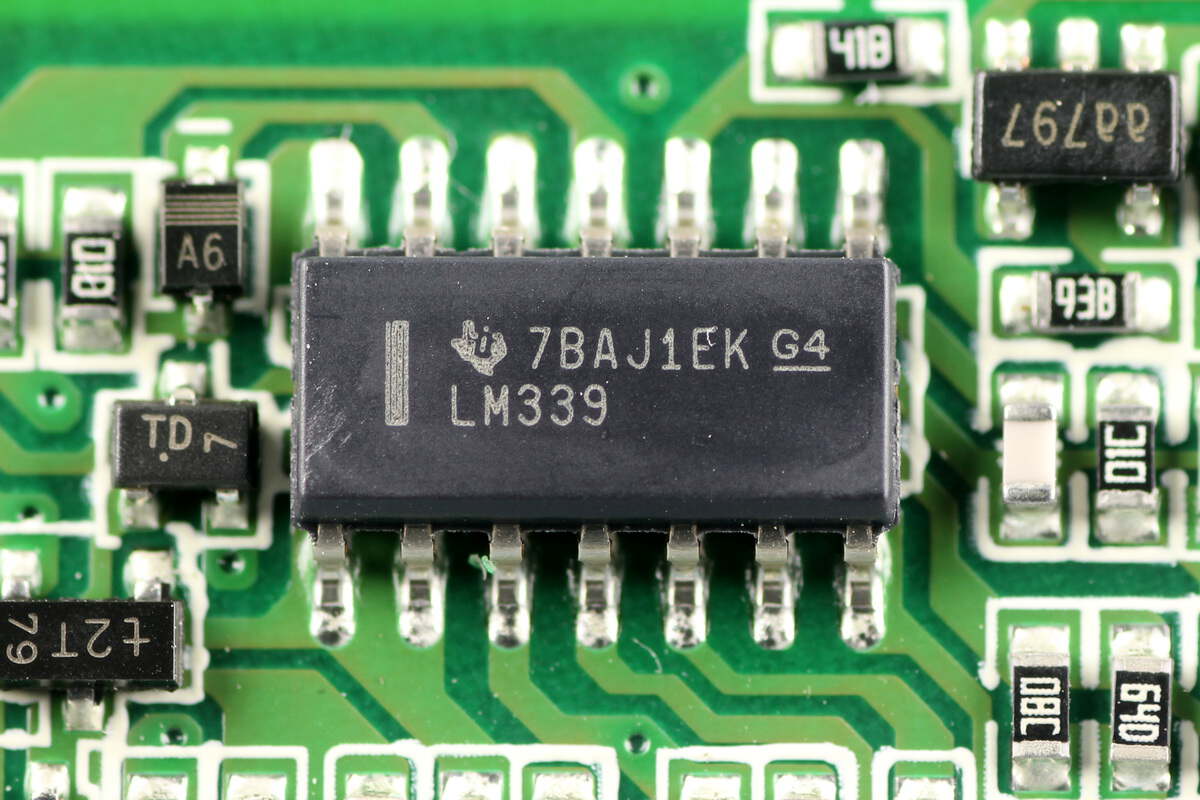
The voltage comparator is from TI, model LM339. It is a quad differential input comparator, packaged in SOIC-14.
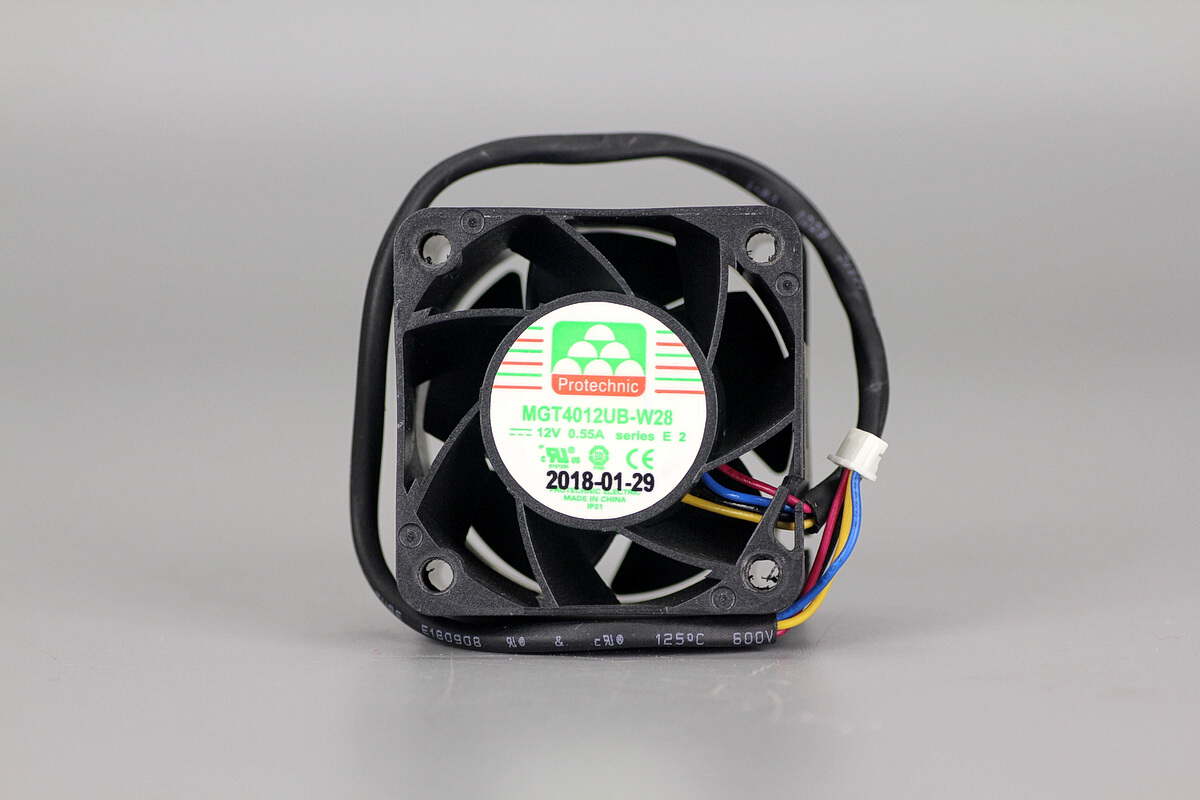
The cooling fan is from NJcon, model MGT4012UB-W28, rated at 12V, 0.55A, and made in China.

Well, those are all components of the GreatWall 550W 80 PLUS Platinum SiC Server Power Supply.
Summary of ChargerLAB

Here is the component list of the GreatWall 550W 80 PLUS Platinum SiC Server Power Supply for your convenience.
It supports a wide input voltage range of 100-240V, with an output voltage of 12V and a standby output voltage of 12V. The rated output power is 550W. It features 80 PLUS Platinum efficiency. The cooling fan draws air in from the rear of the power supply and blows it out through the input side for heat dissipation.
After taking it apart, we found that it uses a PFC+LLC architecture. Both the PFC controller and LLC controller are sourced from CHAMPION. The PFC MOSFET is a VISHAY SiHG30N60E, and the PFC rectifier is an STMicro STPSC4H065 silicon carbide diode.
The LLC MOSFETs are STMicro STP24N60DM2, driven by the SKYWORKS Si8230BD isolation driver. Synchronous rectifiers use APEC AP4N1R8CMT-A. The high-voltage filtering capacitor is from Rubycon, and the solid capacitors are from NCC. Parameter acquisition is performed using MCUs from NXP and Microchip. The workmanship and component selection are solid and reliable.
Related Articles:
1. Teardown of Belkin 15W Auto‑Tracking Stand Pro with DockKit (MMA008)
2. Teardown of RayNeo Air 3s Pro Original USB-C Adapter (XRAC-CHA01OS)
3. Teardown of Xiaomi Mijia Sonic Sweep Electric Toothbrush (MES611)


